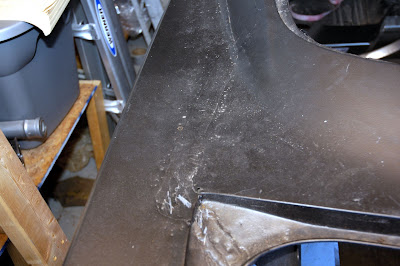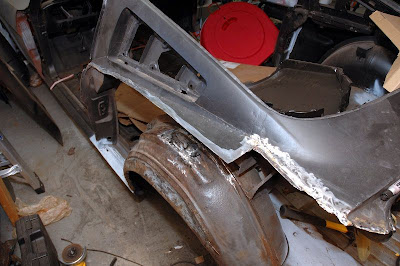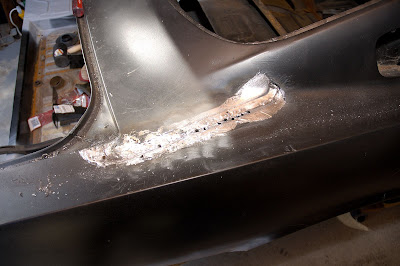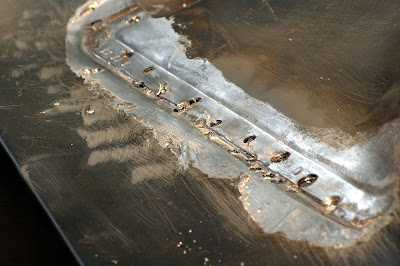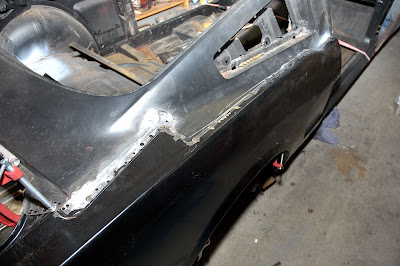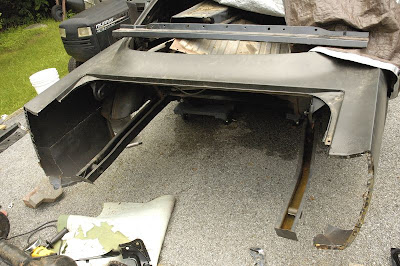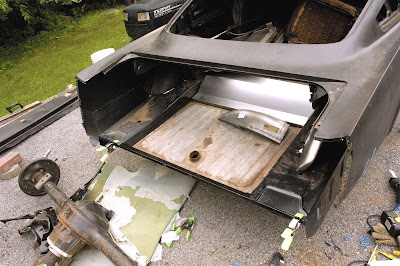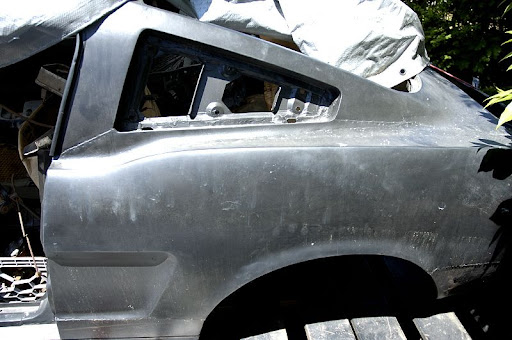The floors were not as bad as some I've heard about. There were large patches over older patches. Most of the other areas were pitted and had pin holes. There was also some evidence of possible accident repairs.
I started with the rear passenger seat area. It seemed to have the most rust damage. It probably would have been a good idea to replace the whole right side floor pan but I went with a 2 piece set up.
With the rotted floor out of the way, I can clean up the frame rail and torque box areas. They were in pretty good shape.
Moving on to the passenger's feet floor area, I encountered an old rusted out patch, held in with screws and few tack welds. There is supposed to be a drain plug there somewhere.
The front passenger floor wasn't much better. To replace the whole passenger side floor, I have to remove the seat riser first since I will be reusing it. Underneath that there was even worse rust.
I roughly cut out the floor in a few small pieces and laid in the new pan to mark the edges. I will be butt welding the new pan in place. Since the floor pan is so large, I decided to leave some extra metal behind. The pan wouldn't lay down in on the frame rails enough to make precise cuts for butt welding.
With a little persuasion and coaxing, the new steel will fit nicely.


















